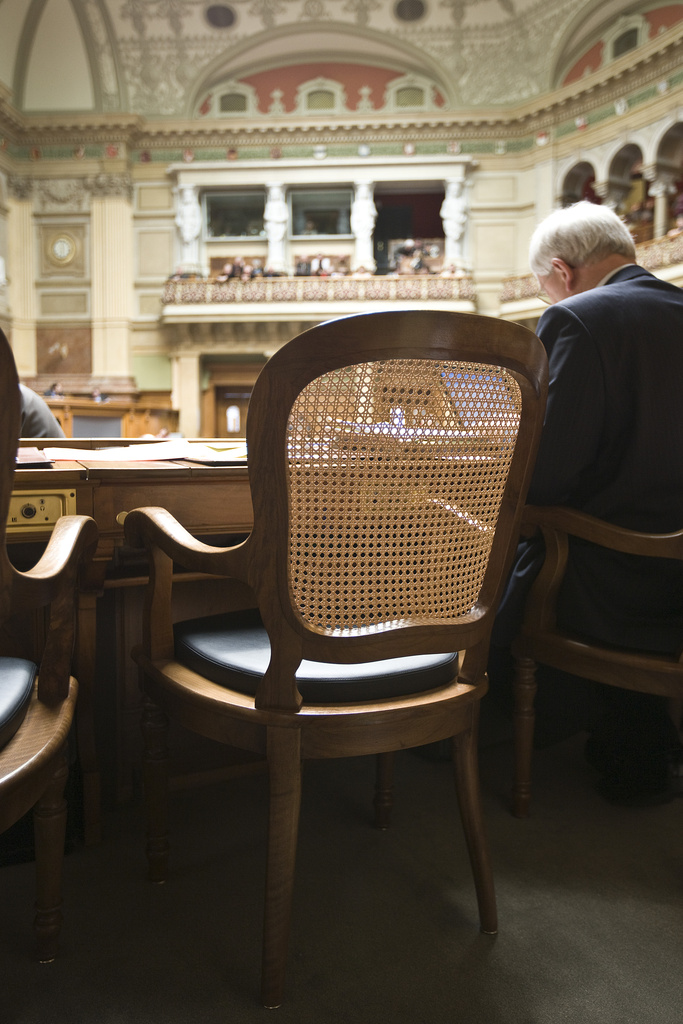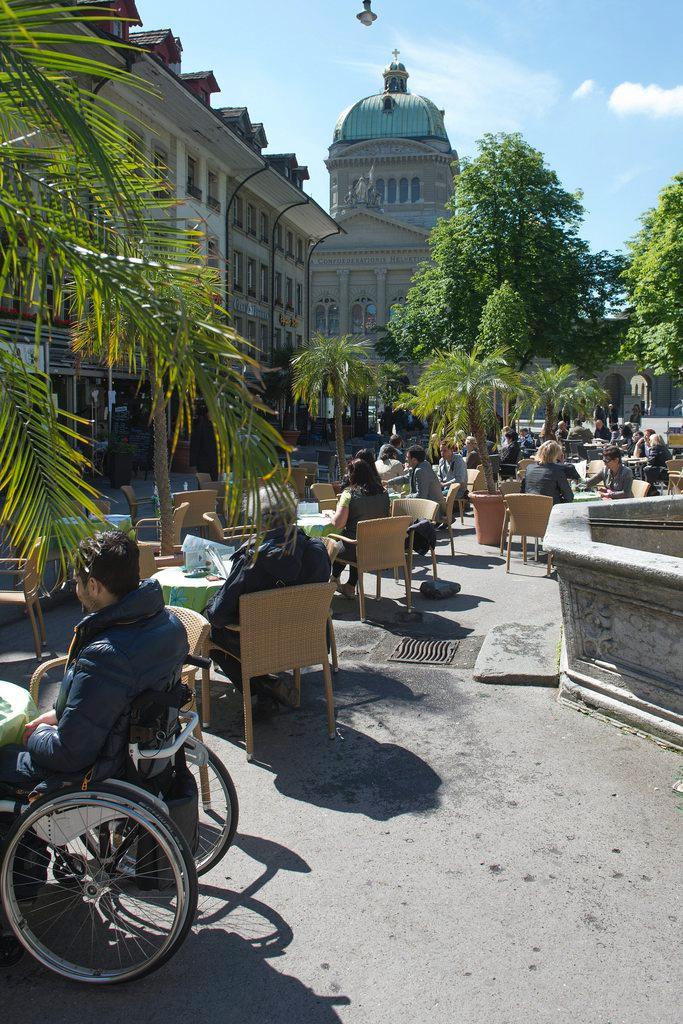Urban and rural areas still split on political lines
The political divide between cities and their suburbs is narrowing, according to research based on the result of every single popular vote since 1983. The Somoto Research Institute together with the Swiss Broadcasting Corporation (SBC, swissinfo.ch's parent company) has used the data to find out whether Swiss communes lean more towards the left or the right; whether they are more conservative or progressive.
Whether a commune is left or right largely depends on its attitude towards the police and the army, environmental protection or asylum-related issues. Being on the conservative side usually means being sceptical towards openness and change whereas a progressive commune is generally in favour of social reforms.
This tendency is also reflected by the Swiss voting against joining the European Economic Area (EEA) in 1992 and turning down the anti-abortion initiative in 2001. SBC has analysed the data illustrated in this graph.
The study further shows how the various so-called ‘area types’ have developed and how, for example, Zurich has a very different political stance to its suburb Schlieren. It also highlights the differences between urban and rural communes, which are significant and have hardly changed over the past 30 years.
“It’s astonishing to see how little the communes have changed their political attitude,” says Michael Hermann, political geographer and head of Sotomo. Hermann believes that the ‘urban-rural divide’ still exists, which is interesting given that the mobility between rural and urban areas has drastically increased.
However, there have been some isolated political shifts. Rural suburbs, for example, have not only become more conservative, they are moving even farther towards the right.
Despite these consistent developments, the political differences within the suburbs are still remarkable though. Communes with a high socio-economic status tend to vote with a more liberal tendency than communes with a lower status.
The data also shows that rural communes have moved a bit further towards the left. Whereas they clearly remain on the conservative right side of the spectrum, they are moving closer to the political centre of urban communes. Another significant fact is that the rural areas are very heterogeneous.
Polarised parties
The graph illustrating the political shifts over the past 30 years clearly shows that the much talked about political polarisation has not affected the voting behaviour of the communes.
“Polarisation does not happen in issue-related politics,” explains Hermann. When it comes to fundamental issues such as EU membership or environmental policies, the gap between the differing opinions has actually narrowed. Herman describes this as a “creeping approach”.
Nevertheless, he is convinced that the parties themselves are being polarised, which he attributes to the fact that their exponents are increasingly supporting extreme positions. “This may win votes, but it often does not represent the wider public.”

More
How well do you know Swiss politics?
The big cities are not taking part in this creeping approach though. Thirty years ago, they were already at the left end of the political spectrum and have now edged a bit further in the same direction. But they have become a lot more liberal: 30 years ago cities were a lot less reformist than communes with a high socio-economic status. It is undoubtedly the cities that are most progressive these days, which means that the rift between liberal-left cities and their suburbs has widened.
Hermann attributes this development to the kind of initiatives that were launched over the last few years. Instead of mobilising the wider public many of the left-wing initiatives, such as the vote on minimum wage and inheritance tax, mainly attracted urban voters to the left of the political spectrum.
Outside the big cities these initiatives did not find any acceptance at all, which has led to urban centres becoming even more isolated with their political positions than before.
It is surprising though that the turnout for popular votes has actually increased given the fact that complaints about poor turnouts have become part of the day-to-day political life.
For Hermann this is not necessarily a contradiction. He has found that political activities have dramatically decreased on a cantonal level while the Swiss have developed a greater interest for national initiatives as well as for national politicians. “Running for a national office has become much more popular than running for a local one,” he observes.
The rightwing Swiss People’s Party, he says, has actually contributed to the increase in turnout. Its rising popularity in the nineties stirred up the political landscape, and with their emotional and provocative campaigns, the party has added some excitement to popular votes and elections.
Translated by Billi Bierling

In compliance with the JTI standards
More: SWI swissinfo.ch certified by the Journalism Trust Initiative














You can find an overview of ongoing debates with our journalists here . Please join us!
If you want to start a conversation about a topic raised in this article or want to report factual errors, email us at english@swissinfo.ch.